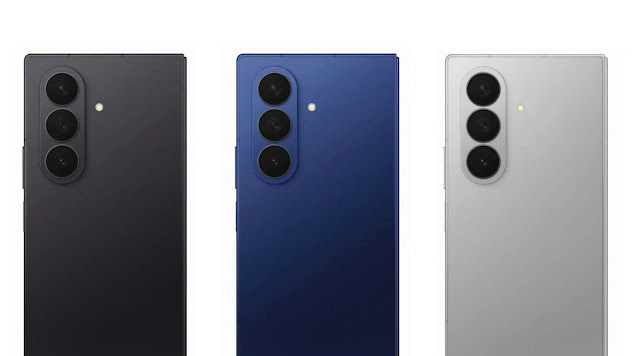iOS 26 Beta 2 Update:
Apple Scales Back Liquid Glass Effect After User Backlash—Exclusive Screenshots & Beta Test Insights:
The fresh release of iOS 26 Beta 2 has everyone talking. Apple rolled out a new visual feature, the Liquid Glass Effect, which initially wowed some but met strong criticism from many users. As feedback poured in, Apple responded by toning down this flashy effect. This article takes a deep dive into what happened, with exclusive screenshots and insights straight from the beta testers.
The Evolution of the Liquid Glass Effect in iOS 26
What is the Liquid Glass Effect?
The Liquid Glass Effect is a visual style that makes user interfaces look as if they're made of flowing, semi-transparent glass. It creates a shiny, almost liquid-like appearance on backgrounds and UI elements, giving a sense of depth and movement. Apple’s goal was to add a new layer of immersion, making the interface seem more alive.
Initial Implementation in Beta 1
In Beta 1 of iOS 26, Apple introduced this effect across home screens, notifications, and app interfaces. The visuals looked sleek and futuristic. However, many users quickly pointed out that it was too distracting, with some claiming it made reading text harder or caused eye fatigue. Early feedback from beta testers was mixed, with some appreciating the innovation and others asking for more subtlety.
Expectations from iOS 26
Everyone expected the Liquid Glass Effect to boost iOS's visual appeal. Experts predicted it would set a new standard for iPhone design—more dynamic, more immersive. Both developers and users looked forward to seeing how Apple would refine this feature before the official release.
User Backlash and Feedback Triggering the Scale-Back
Nature of the Backlash
Users expressed their concerns loudly. Many found the shimmering, semi-transparent style too flashy, confusing their focus. Some reported that the effect clashed with existing app designs or caused lag on older devices. Common complaints included visual clutter, distraction, and inconsistency across the interface.
Apple’s Response to User Feedback
While Apple rarely comments openly on beta feedback, clues from developer notes suggest they’re listening. Official statements hinted at a commitment to balancing eye-catching visuals with user comfort. The fact that the Liquid Glass Effect was scaled back indicates Apple values user experience over pure aesthetics.
Impact on the Development Timeline
This reaction pushed Apple to adjust their beta schedule. Instead of pushing new features prematurely, they paused to improve usability. With a focus on stability and user satisfaction, beta releases now emphasize reactions from the testing community.
iOS 26 Beta 2: The Scale-Back of the Liquid Glass Effect
What Has Changed in Beta 2?
In Beta 2, Apple significantly toned down the Liquid Glass Effect. The shimmer is less prominent, with fewer transparent overlays and smoother animations. It feels less like a floating, liquid surface, and more like a subtle enhancement layered into the UI.
Exclusive Screenshots & Visual Highlights
Below are side-by-side images comparing the initial effect in Beta 1 and the revised look in Beta 2:
Insert Side-by-Side Comparison Image of Beta 1 and Beta 2 Effects
The difference is clear. Beta 1's version had intense transparency and dynamic movement. Beta 2 offers a more restrained, simpler look. The interface feels cleaner, with less visual noise.
Developer and User Reactions
Beta testers welcomed the change. Many said it made the overall visual experience more balanced. Developers appreciated how the revised effect made it easier to adapt their apps for the new UI without sacrificing performance or clarity. Early feedback suggests Apple might keep refining this effect before the official launch.
Technical Insights and Behind-the-Scenes of the Adjustment
Design Team Decisions
Apple’s design team aimed to innovate without alienating users. Scaling down the Liquid Glass Effect was a strategic move to improve clarity and reduce eye strain. They’re trying to find the sweet spot between engaging visuals and user comfort.
Implementation Challenges
Adjusting such visual effects isn't simple. Apple had to balance aesthetics with device performance. They faced hurdles in ensuring the effect didn't cause lag or drain battery life, especially on older models. Simplifying the effect helps optimize performance without sacrificing the sleek look.
Future of UI Effects in iOS 26
Expect Apple to test different versions of this effect in future betas. There’s a good chance the Liquid Glass Effect might return in a more refined form, or perhaps be replaced with other immersive visuals. The trend toward minimalism continues, favoring subtlety over elaborate effects.
Actionable Tips for Users and Developers During Beta Testing
For Users Testing iOS 26 Beta 2
- Always share detailed feedback with Apple. Your input shapes the final product.
- To preserve performance, disable unnecessary effects if your device slows down.
- Keep backups before installing beta updates—testing software can be unpredictable.
For Developers
- Update app UI to match the revised, less flashy visual style.
- Test your apps on Beta 2 to ensure compatibility with the new effects and animations.
- Focus on responsiveness and readability, making sure the new interface doesn’t hurt user experience.
Security and Stability Advice
- Participate safely in beta testing by backing up your data regularly.
- Avoid installing on primary devices if you rely heavily on stability.
- Use beta profiles from official sources to minimize risks.
Conclusion
The iOS 26 Beta 2 update marks an important step in balancing innovation and user feedback. Apple’s decision to scale back the Liquid Glass Effect shows they prioritize a smooth, enjoyable user experience. As the beta process continues, expect further fine-tuning in UI visuals, guided by your feedback. Stay engaged, test thoroughly, and watch how this evolving design shapes the future of iPhone interfaces. The next update might bring even more exciting changes, making iOS more beautiful and practical than ever before.



Comments
Post a Comment